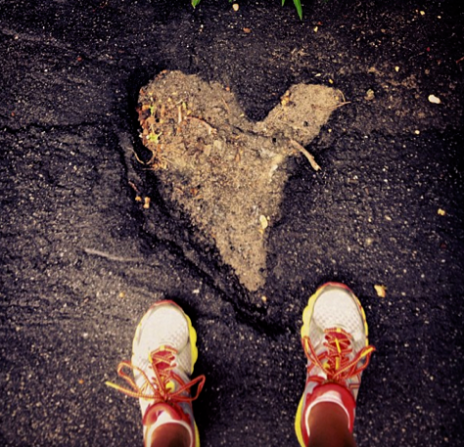About two years ago a professor gave me a piece of advice that I don’t think I’ll ever forget. After class one day he told me: “I don’t know what you’re going through, but whatever it is, just know that things get better. It might not seem like it now, but things get better”. That phrase “things get better” has stuck with me ever since because as bad as a problem can seem, no bad thing can last forever.
Last May however, I briefly forgot this piece of advice, and when I did remember it I definitely didn’t believe it.
On May, 17th last year I was on a flight back from Copenhagen, Denmark when my heart started racing at over 120 beats per minute. I was leaning back in my seat trying to fall asleep when I started to feel my heart rate abruptly quicken. As soon as this began I felt like all the blood was rushing to my head. Even though I was seated it felt like I had just tried to stand up too quickly. Then, my heart started to beat irregularly; I felt multiple beats where I would usually have only felt one. Next, my heart started to skips beats, and my hands began to sweat. I briefly felt so lightheaded I thought I would pass out. I was flying alone, seated between two strangers, and I had 5 hours left to go on my flight. Saying that I was terrified is putting it lightly. Not knowing who to tell, what they could do to help me, or what I would even say, I spent the rest of the flight sitting in my seat wondering if I would die.
When I got home the episodes didn’t stop, in fact, they got worse. But I still didn’t tell anyone (which was dumb, dumb, dumb—don’t’ do that if you’re ever in this situation). I slept about two hours the first night I was back in the United States. The next day I decided to take myself to a walk-in-clinic. I waited for three long hours to see a doctor and once I did my doctor decided to send me to the Emergency Room.
Over the next two weeks I was in and out of the ER for symptoms that included: chest pain, pain in my left arm, stomach pain, irregular beats, racing heart, and for feeling suddenly lightheaded. Eventually, I was referred to a cardiologist who like every other doctor I had seen did an EKG and several blood tests. She then did an echocardiogram (ultrasound of the heart) and provided me with a 24-hour halter monitor, which I had to keep strapped to my chest for a day so she could observe my heart rhythms. I showed up to the first day of my summer internship with wires poking out of my dress. Later, my cardiologist gave me an “event monitor” which allowed me to record particular episodes of irregular beats and to call them into a company that would immediately look at my heart rhythms and tell me if they saw anything dangerous. For a couple months I felt like all I did was go from doctor’s appointment to doctor’s appointment.
Following all of these tests my cardiologist was able to identify that I was not in fact crazy (hallelujah), and that the irregular beats I had been feeling were in fact there, except she called them PVC’s (premature ventricular contractions) and palpitations. While she couldn’t’ account for all my symptoms, she told me because all of my tests indicated that I had an otherwise healthy heart, these strange beats I was feeling were benign, in other words, not dangerous.
But after a couple months of feeling light headed, having chest pain, arm pain, irregular beats, a racing heart, and having painful stomach problems I did not feel relieved by this answer. In fact, hearing: “You’re fine, just try to ignore the symptoms!” made me want to pull my hair out. I think what I wanted was for her to fix me and with the exception of her saying: “sleep more, and minimize your alcohol and caffeine intake” I felt like she had fixed nothing. I left her office that day certain of two things: 1. I was going to have to go through every day the rest of that summer wondering if my heart might just suddenly stop beating and 2. things would not get better.
But then, as summer was ending I went on a run and I was reminded that I couldn’t feel as awful as I had those last couple months forever.
A few days earlier my doctor had explained to me that sometimes the “pausing” sensation I felt was due to a powerful contraction occurring after a premature heart contraction. This “pause” between beats would then be more exaggerated while running because my blood would be pumping at a much faster rate creating a more powerful contraction after the premature one.
I had avoided running all summer because of this, but on this day I decided to finally lace up my sneakers and at least give running a try. Several times in that first mile I felt like I had been hit in the chest because of the pausing sensation in my heart, and each time I debated just stopping the run altogether. I was feeling really discouraged and ready to quit when I noticed a pothole in front of me. It had just rained that morning and because of that, the pothole’s shape was very defined. I stopped and I stood above it, and as I did I realized that it was in the shape of a heart. As I stood there staring down at that heart, it seemed too ironic to be true. Now, maybe I was just seeing what I wanted to see–but I still couldn’t help but to smile when I saw it. I don’t usually believe in signs from the universe, but on that day that oddly shaped groove in the pavement sure felt like one. And for some reason, for first time all summer I began to feel like maybe everything was going to be okay after all.
And you know what, I survived that run and the next one, and now I run more than I ever did before. And while my heart problems haven’t gone away, I have learned to live with them—something that seemed virtually impossible just months ago. Sometimes we just need something (even something little like an oddly -shaped pothole) to remind us that even when things seem like they cannot get any worse, things do get better.




